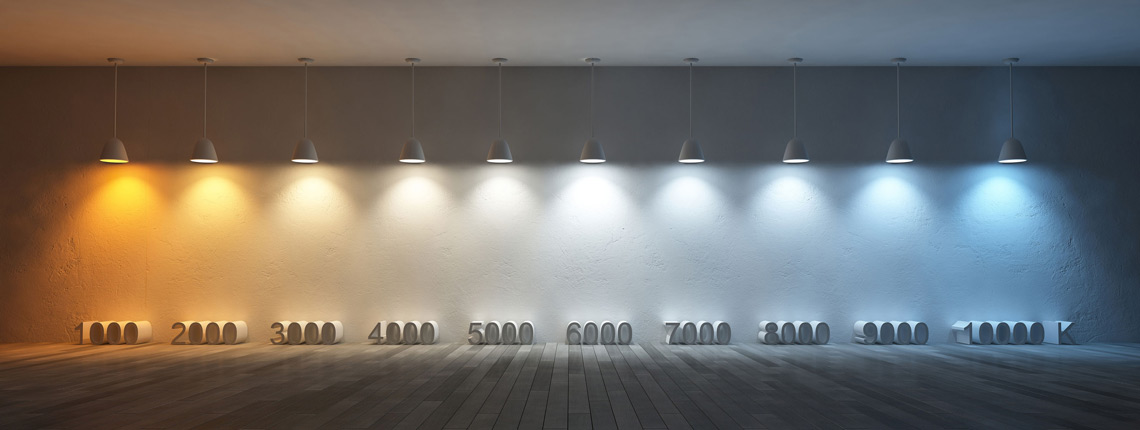When we talk about colour temperature we are referring to the warmth or coolness of light. Warmer light being more yellow, cooler being more blue. There is no ‘standard’ ‘White’ LED. You need to make a choice when you purchase your fittings, do you require a warm or cool light.
Get in touch to find out how we can help with your Lighting Design needs
Candles are very warm of course, basically yellow/orange, whereas daylight at noon is very cool. The colour or warmth of white light is ranked on a scale, The Kelvin scale, the warmer the colour the lower the colour temperature. Candles being around 2000 degrees Kelvin (k) while daylight typically 5500 – 6500k.

The majority of LEDs are produced to be either 2700k, 2800k, 3000k, 4000k or 5000k. 2700-3000k being warm, 4000-5000k being cool.
Some people do have some misconceptions about LEDs. They believe LEDs provide a cool unflattering light. This is almost certainly due to previous experience with cool 4000k ‘low quality’ LEDs, the type you get from eBay for a few pound each. We can assure you there are now some fantastic LEDs available. The LED fittings we use provide a lovely good quality warm light. In fact with most of them you cannot tell the difference between halogen.
80% of the luminaires we specify are warm white (2700 / 2800 degrees Kelvin). Generally it’s 100% for our residential projects. This goes back to our previous blog – What colour white do you prefer – that said, cool white LEDs do have their place. Certainly in office projects and work spaces cooler white can be preferable (cooler colour temperatures can actually help increase productivity).
When choosing the colour temperature you really need to consider the finishes and colour palette of each space. Reds, orange, yellow, and wood all look beautiful under warm white light. Whereas blues, and greys can look ‘flat’. Cool white will make blue colours look amazing and can make white look ‘crisp’. However reds and yellows can appear a little brown and wood can look ‘dull’.
In your home it may be worth considering using cooler LEDs in the kitchen or bathrooms, particularly if plenty of natural light is available. Warm white LEDs can make white surfaces look a little ‘muddy’ compared to daylight and generally bathrooms and kitchens have white finishes. Cooler white can also create a more clinical or sterile feel, which can be desirable in a bathroom or kitchen.
The key is not to mix colour temperatures in a room. Once you’ve decided which colour temperate to go for, stick with it, make sure all lights and light bulbs in that space are the same.
In the past few years ‘tuneable’ white light fittings are coming into the market. These give you the ability to adjust or tune the warmth of the light source. Fantastic for creating different effects, cooler during the day and warmer at night, or lighting artwork, giving the ability to tune the light to complement the colour palette of picture. Although tuneable fittings come at at cost and of course you need some sort of control system.
If you are looking for a relatively low cost and good quality warm white LED light bulb, then we currently recommend the 7W Megaman lamp. A higher quality but more expensive option is Soraa.
If you’re looking for an LED engine then take a look at the Xicato artist series. Or for a great quality LED down light then we recommend Orluna’s fantastic product.
For more information and advise on what colour temperatures to use in your project please feel free to get in touch. Our designers are more than happy to help. The golden rule is ALWAYS check colour temperature before you spend your money. Make sure all light sources in a room match, including any lights that come built into fixtures like cooker hoods or bathroom mirrors. Colour temperature will be stated on the packaging or product data sheet.











